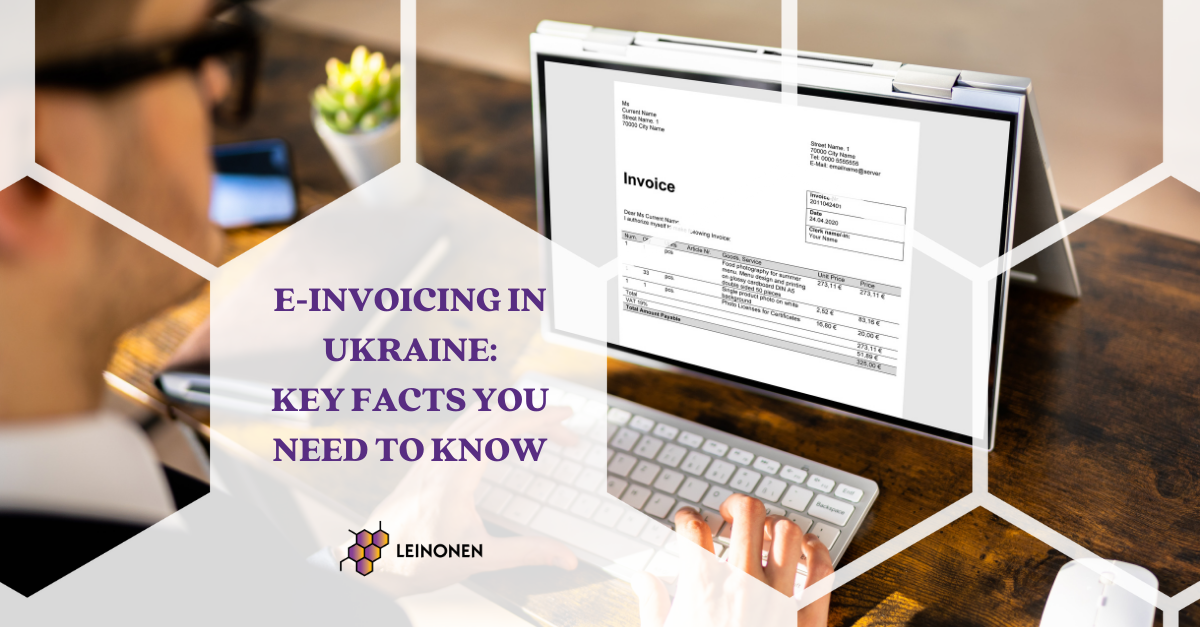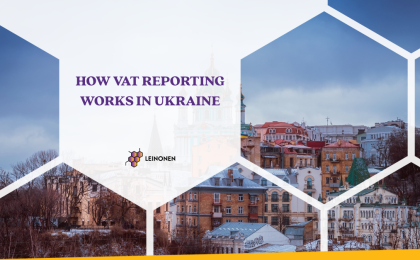Benefits from efficiency and security through to saving physical resources make e-invoicing a convenient, cost-effective and eco-friendly option for businesses of all sizes. And with e-invoicing already well established and widely used in 2024, accounting in Ukraine is striding way ahead of many other European countries.
How Does E-invoicing Differ From Paper Invoicing?
An e-invoice (short for electronic invoice) is a type of electronic document used in accounting. In these documents, information is recorded and sent in the form of electronic data that can be read by e-invoicing systems. E-invoices are typically sent straight from one party’s system to another, eliminating the need to email, manually print or post invoices.
What are the Advantages of E-invoicing?
Convenience and Efficiency
Once set up, e-invoicing systems offer a simple and highly efficient method of managing finances that can be seamlessly integrated with accounting software. Document signing can be immediately requested through a simple notification to the recipient, with any delays on approvals and signatures being easily tracked. This means issues are typically identified and solved quicker than with paper invoices.
Enhanced Security
E-invoicing is a safer method of storing and sharing sensitive information. Using password protected systems and encrypted data, businesses can easily track when an invoice has been delivered, avoiding interception or loss of important financial documentation.
Saving Resources
By switching to e-invoicing, companies can save on costs related to printing and mailing paper invoices. This ability to reduce paper use and transportation is also a great way for businesses to reduce their carbon footprint. And with up to 30% of Ukraine’s transport infrastructure having been damaged since the beginning of the war, switching to e-invoicing is a smart solution to help avoid delays in postage of paper invoices.
5 Important Considerations for E-invoicing in Ukraine
- There are certain mandatory details that must be included in an electronic document like an e-invoice in Ukraine, detailed in Article 5 of the Law of Ukraine “On Electronic Documents and Electronic Document Management”.
- To use e-invoicing in Ukraine, mutual consent is needed from all parties involved. This agreement can be formalized orally, within a business contract, or using an additional written agreement.
- If a buyer insists on paper invoicing, a business cannot refuse.
- Paper and e-invoices have the same legal consequences.
- E-invoices must be securely stored for the same duration as all primary documents.
How to Move From Paper to E-invoicing in Ukraine
Whether you wish to make your business more environmentally friendly, or simply modernise and streamline your accounting processes, moving to e-invoicing is relatively simple.
Choose a Software
Firstly, you will need to conduct some research and decide on an e-invoicing software that suits your needs and budget. A range of options are available in the form of software programmes, online platforms and mobile applications. Popular choices for e-invoicing in Ukraine include MeDoc, Vchasno and Freedo. When considering your options, make sure to explore the security of each. Ask the following questions during your research:
- How does the system ensure the preservation of electronic documents (e.g. backup copies stored in a secure cloud)?
- How is the secure system accessed (e.g. password, biometric, multi-factor authentication)?
- Does it have a demarcation of access rights functionality? This allows only designated users to have specific abilities (like signing or accessing certain documents).
- What method of data encryption is used to maintain the confidentiality of e-invoices?
Develop Standard Regulations
Once you have chosen the system for you, it must be set up properly, with company regulations for internal electronic document management being developed. This standardised process must be properly communicated to employees, and their written consent obtained. For e-invoicing with external counterparts, an additional agreement should be drawn up. This must properly explain the process of electronic document exchange and clearly identify which documents should be signed electronically.
How Leinonen can Help With E-invoicing in Ukraine
While there are no industry-specific needs for e-invoicing in Ukraine, standard regulations on electronic documents must be adhered to. Obstacles like choosing the wrong e-invoicing software, setting up the system incorrectly, or not having clear policies on the use of e-documents could lead to complications down the line.
Leinonen accounting in Ukraine can help you get it right first time, guiding you through the process of choosing a suitable system to meet your business’ needs, and developing regulations, processes, and additional agreements as needed. Our experts will help you reap the benefits of streamlined invoicing as quickly and smoothly as possible.
Get in touch today to find out how Leinonen is paving the way for modernised accounting in Ukraine.





